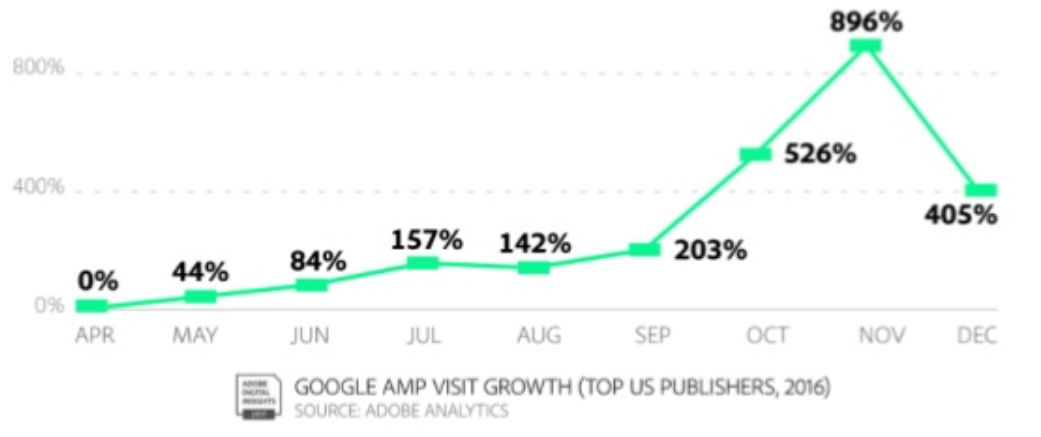 Ever since Google launched AMP, as their answer to a lightweight and fast way for searchers to view webpages, many publishers have been slowly adopting it. And when Google announced that it would be coming to the “ten blue links”, even more websites decided to adopt it. But many weren’t sure just how popular it was.
Ever since Google launched AMP, as their answer to a lightweight and fast way for searchers to view webpages, many publishers have been slowly adopting it. And when Google announced that it would be coming to the “ten blue links”, even more websites decided to adopt it. But many weren’t sure just how popular it was.
Adobe released data about AMP for top US publishers, and discovered that US publishers are now seeing 7% of all their traffic – across devices – through AMP, as of December 2016. This analysis covered over 16,000 mobile sites.
They also noted that since that since launch, there has been a 405% increase in growth through December 2016. What is an interesting notation to these stats is there was a huge spike to 896% in November which Adobe attributes to the US election season.

What is interesting is that Adobe tracked a decrease in August, which coincides with Google announcing that AMP would be coming to the regular organic search results, a time when many publishers were finally jumping on board with AMP. But with the jumps seen in September onwards, it could be attributed to a larger number of AMP available results, as AMP moved from just the top stories section to the regular results.
It also shows that while AMP is certainly the technology used to display 7% of traffic, that percent is not as high as some would expect. But it could be that with enough non-AMP sites taken into account, that number could be skewed. A much more interesting and relevant metric would be of sites with AMP fully employed, how much traffic to those sites is AMP, as I suspect it would be much higher.
Jennifer Slegg
Latest posts by Jennifer Slegg (see all)
- 2022 Update for Google Quality Rater Guidelines – Big YMYL Updates - August 1, 2022
- Google Quality Rater Guidelines: The Low Quality 2021 Update - October 19, 2021
- Rethinking Affiliate Sites With Google’s Product Review Update - April 23, 2021
- New Google Quality Rater Guidelines, Update Adds Emphasis on Needs Met - October 16, 2020
- Google Updates Experiment Statistics for Quality Raters - October 6, 2020